Review of the recursion concept:
|
Review of recursive functions:
|
Purpose of this lecture:
|
Suppose we need to solve a problem of size n:
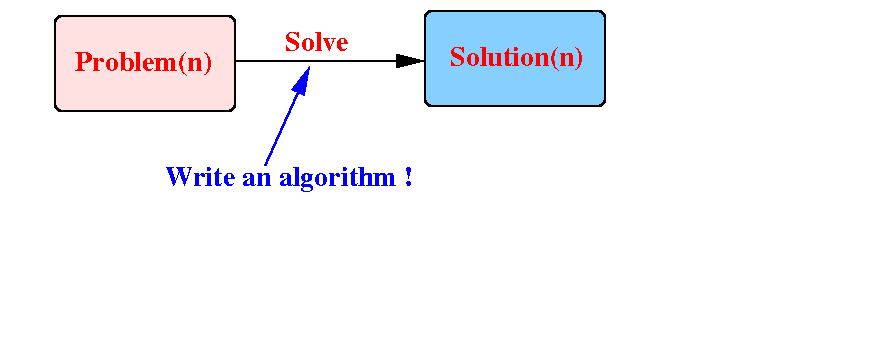
Consider the other identical (but) smaller problems:
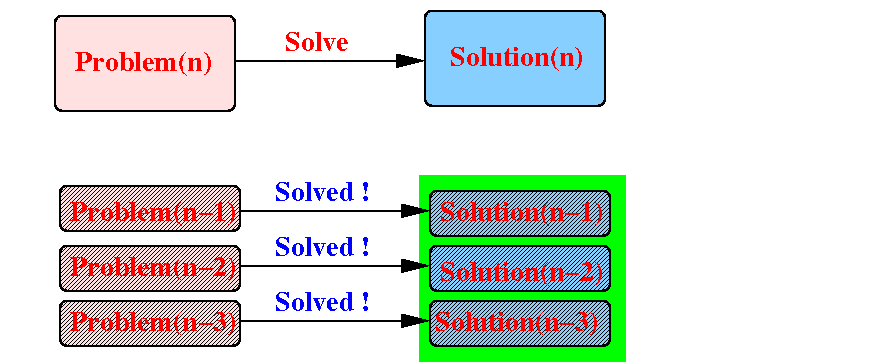
Suppose that we (already) have the solutions for all the smaller problems, i.e.: we do not need to solve them
If we can construct Solution(n) using the solutions of the smaller problems:
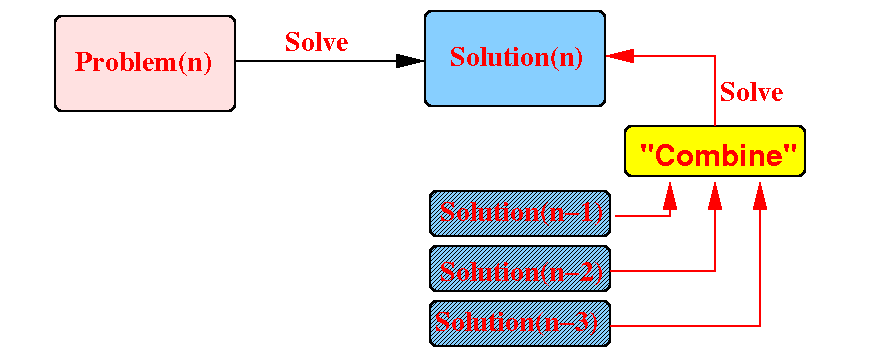
Then: we can use recursion to solve Problem(n) !!!
Suppose we need to compute fac(10):

Consider the smaller problem of fac(9):
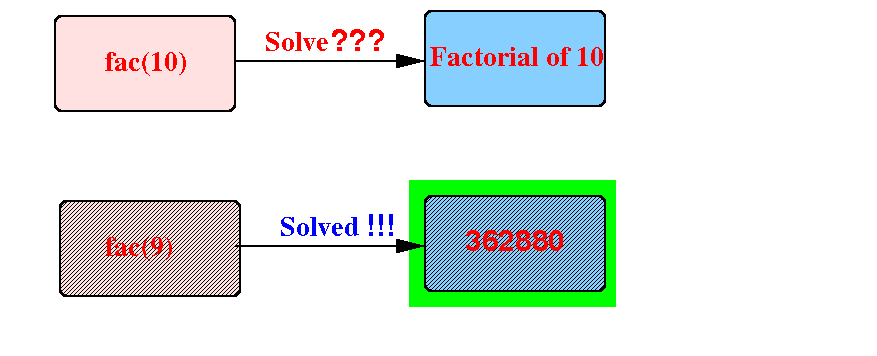
Question: can we solve fac(10) using the value 362880 ?
We can compute fac(10) using the value 362880 as follows:
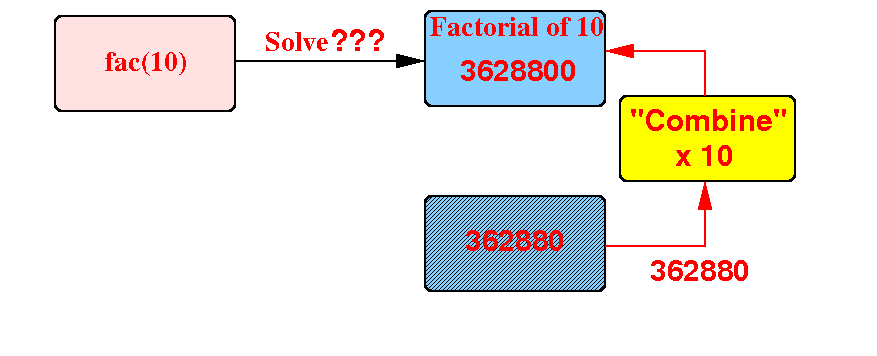
Therefore: we can write factorial as a recursive function !
Why you can use recursion to compute 10!:

Situation: I have an idea how to do it....
Situation: I know that 10! = 10 × 9!
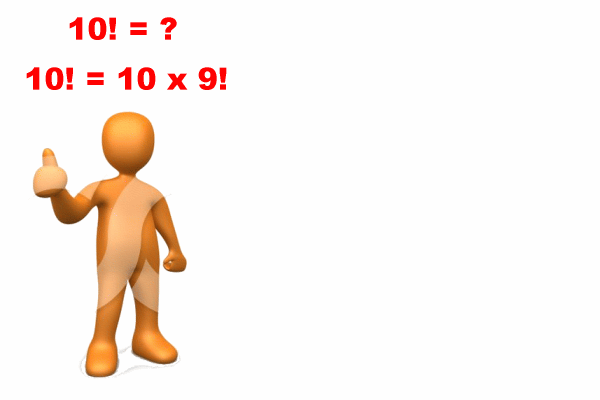
However: I will need the solution for 9!...
I will delegate the 9! problem to a helper (someone else):
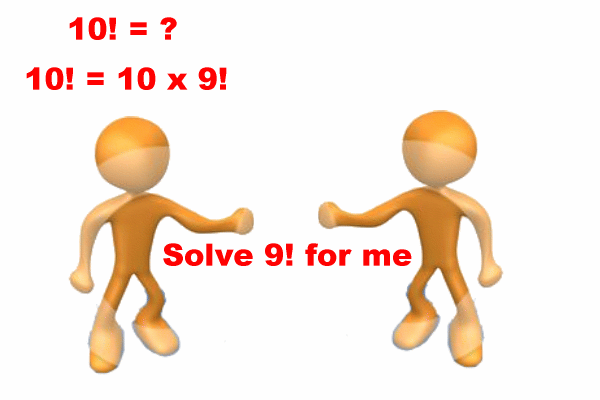
This technique is called divide and conquer and another process will solve the smaller problem
After I delegated the problem 9! to a helper (another person), I will wait for an answer

BTW: the helper that solves 9! is not the original person !!
Eventually (sooner or later), that helper (= another person) will be done:
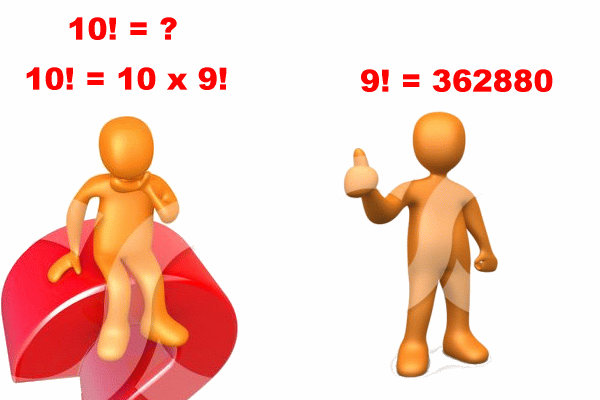
Meanwhile, I (= the original person) am still waiting for the answer...
The helper (= other person) give the answer 362880 to me (= original person):
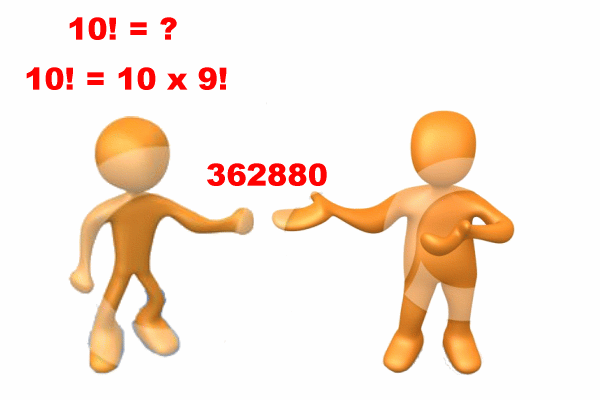
Notice: I (= original person) only need the answer 362880. I don't need to know how he solved it !
I (= original person) can solve my problem 10!:
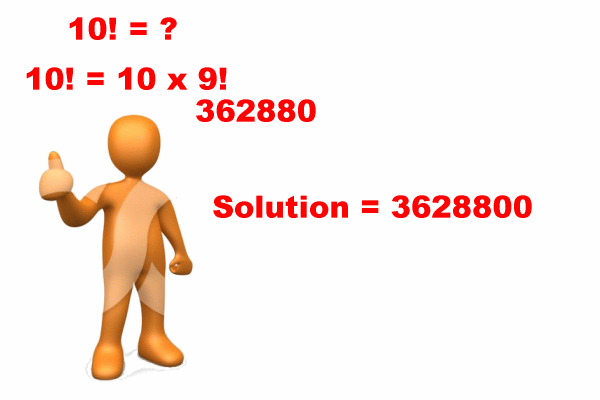
So: recursion is a divide and conquer problem solving technique !
Students are usually taught the following fac( ) function:
int fac(int n)
{
if ( n == 0 )
return 1;
else
return (n * fac(n-1));
}
|
This form does not reveal how the divide-and-conquer technique was used...
I teach students the following function in my intro CS class (Java):
int fac(int n)
{
int helpSol; // Solution to the smaller problem
int mySol; // Solution to my problem
if ( n == 0 )
return 1;
else
{
helpSol = fac(n-1); // Delegate a smaller problem to someone
// (helpSol will receive the solution)
mySol = n*helpSol; // Solve my problem using the
// solution of the smaller problem
return (mySol);
}
}
|
This form reveals how the divide-and-conquer technique was used !
You must distinguish between fac( ) that solves your problem and fac( ) that solves a smaller problem:
int fac(int n) <--- This fac( ) represents "YOU" (solves your problem) { int helpSol; int mySol; if ( n == 0 ) return 1; else { helpSol = fac(n-1); <--- This fac( ) your "helper" ! This fac( ) solves a smaller problem mySol = n*helpSol; return (mySol); } } |
So recursion will run another (copy of the) function